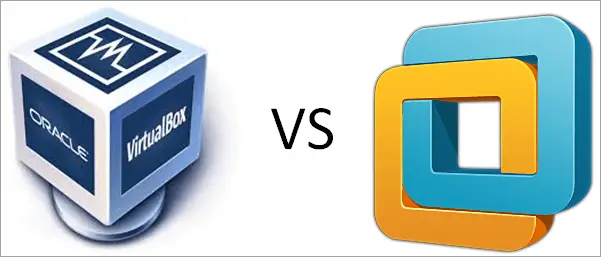
- #Vmware vs virtualbox linux how to#
- #Vmware vs virtualbox linux install#
- #Vmware vs virtualbox linux full#
- #Vmware vs virtualbox linux Pc#
The user can choose which paravirtualization interface to go with for a given VM (such as Hyper-V or KVM) or allow VirtualBox to decide automatically. The good news is that the major OSes - Windows, Linux, and FreeBSD, for instance - can all do this. Paravirtualization allows guest OSes to perform certain actions directly on the host hardware through an API exposed on the host, although the guest needs to be paravirtualization-aware for this to work. VMWare vSphere/ESXi (technically runs beneath Linux) VMWare Workstation QEMU Oracle VirtualBox. VirtualBox 5.0 adds paravirtualization support for Windows and Linux guests. Hyper-V vs VirtualBox: checkpoints vs snapshots. That isn’t to say performance improvement wasn’t on the agenda at all. With version 5.0, the new features are mainly aimed at making day-to-day work a little smoother.
#Vmware vs virtualbox linux full#
VirtualBox has generally distinguished itself as the free alternative to VMware Workstation, even if its feature roster wasn’t as full or its performance as snappy as that of its commercial competitor. How high has the bar been raised? High enough to keep VirtualBox competitive at the low end of the VMware Workstation market, although not enough to make it a one-to-one substitute for users wanting Workstation-level performance. With version 5.0, VirtualBox closes some of the gaps. In short, VirtualBox and Workstation are the most capable ways to run virtual machines on the desktop. Both support linked clones, which base copies of VMs on snapshots to save disk space. Both let you take as many snapshots of VMs as you can store, and they give you a graphical timeline to navigate among them. (VirtualBox also runs on OS X, whereas VMware offers Fusion for Macs.) Both VirtualBox and Workstation let you create large VMs and complex virtual networks.
#Vmware vs virtualbox linux Pc#
These emulators can run Raspberry Pi OS on a standard PC running Windows, Linux or. Both run on Windows or Linux hosts, and both support a broad range of Windows, Linux, and Unix guests. VirtualBox, VMWare and QEMU are three solutions to virtualize a Raspberry Pi. For the price, Workstation has generally led in features and performance, while also providing close integrations with the rest of the VMware virtualization line.įundamentally, though, the two products are quite similar. VirtualBox occupies the “free and open source” corner of the ring, while VMware Workstation is a proprietary commercial application. Recovery of possible data also occurs quickly.Oracle VirtualBox and VMware Workstation have been duking it out for several years now. The application is as automated as possible, the current status of VMFS data storages, disks, volumes can be checked within a few minutes. This utility restores any VM files and snapshots quickly and efficiently.
#Vmware vs virtualbox linux install#
You should not look for complicated solutions to this problem: you can just download and install DiskInternals VMFS Recovery.
#Vmware vs virtualbox linux how to#
How to recover snapshots and other VM files Keep in mind that snapshots significantly affect the performance of both Virtualbox and VMware.

When the snapshot is no longer needed and it is deleted, the differential virtual disk is freed and merged with the parent virtual disk. The next snapshot is, in a sense, another differential virtual disk. Here’s how snapshots work: When a snapshot is taken, a differential virtual disk is created in which all changes are subsequently recorded.

Virtualbox and VMware products both have this feature in this respect, they are the same. If you have any problems, you can return the state of the virtual machine to the snapshot. Quite often, they are used before testing various applications and programs. Snapshots are an excellent VM function that allows you to save the state of your virtual machine at a specific point in time.


 0 kommentar(er)
0 kommentar(er)
